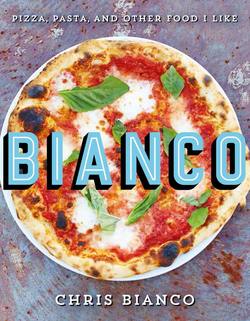Читать книгу Bianco: Pizza, Pasta and Other Food I Like - Chris Bianco - Страница 23
ОглавлениеSALAD WITHIN REACH
Sometimes less is still too much. That thought is always in the front of my mind when I’m making a salad. To me, a beautiful salad is all about restraint. It’s about respecting and understanding the ingredients, and about letting them shine. If I had to share just one thing to give a person real tools for cooking, it would be how to prepare a salad. And that is all embodied in two words I always return to in all my cooking, but especially when thinking about salad: optimal and appropriate.
Optimal is pretty clear-cut. I use it to refer to food that is at its peak, its very best, because it’s been nurtured with care in a landscape in which it can flourish, and harvested at a time dictated by its natural growing cycle. Optimal ingredients are those that are pretty much already perfect in the raw, so they offer the cook tremendous opportunities to play on that perfection, to shine a light on all the different qualities of the ingredient.
Appropriate is a little trickier. For me, appropriate as an adjective refers to things that are right in their context, that are in balance—like an appropriate amount of dressing for a salad, or an appropriate pairing of ingredients. And when I use the word as a verb, I don’t think about it in its more negative connotation, of taking something that isn’t mine, but rather as snatching up an optimal ingredient and exploiting all its amazing potential.
Making a salad can be a tremendous lesson in flavor, texture, and using what’s on hand, and in considering the source—understanding where something comes from—as well as what it is and how to handle it. Ideally you’d never make salad by going to the grocery store, recipe in hand. Instead, you’d hit the farmers’ market and let what was best and fresh call to you. A salad within reach. A salad inspired by the season and the best available ingredients, not one dictated by a predetermined recipe, regardless of what makes sense.
Sometimes there is a very narrow window when an ingredient is at its optimum. In Arizona, we have a peach called Desert Gold, which usually comes into season in the last week of May, when the temperature goes from beautiful to hot as hell. When they are übersweet and warm from the sun, these peaches taste like peach cobbler straight off the tree. They are so ripe and vulnerable to bruising and bursting. When they are in season, I lay hands on as many as I can get and eat ridiculous amounts of them. The juices just run down my chin, and I let them—they are perfection. And yeah, you can’t improve on perfection, but perfection is an opportunity. It gets me thinking, How can I share this beautiful fruit? How can I showcase it? How can I make use of it in as many ways as possible while respecting this perfection?
So here I am. I have a basket of fresh-picked Desert Golds. And I remember that my farmer has just delivered some young arugula. Now I have two flavor elements, sweet and bitter, and two textural elements, juicy and tender. I start thinking about a third ingredient. I reach for some fantastic goat cheese, a fatty and tangy element to add to the salad.
I take a few peaches, reserving the juiciest one, and pull them gently off the pits, tearing them apart over a bowl, because that juice is going to become a part of the dressing. Then, using my hand as a measure, I add arugula. I’m aiming for an equal proportion of fruit to green, so neither overpowers the other. I add the cheese to the arugula, the peaches, and their juices, and fold the salad gently with my hands so the cheese will find its way through the leaves and cling to some of them, its creamy whiteness just peeking through.
Dressing time. Dressing is there to enhance, not drown, the salad. So we’re talking about an appropriate amount of olive oil. To me, that means that the leaves are just lightly coated in oil. After the olive oil, I reach for that juicy peach I set aside (I like to call it the sacrificial peach) and I just squeeze it over the salad. The juice that comes out provides a little extra acidity, sweetness, and balance. Using my hands again, I gently toss the salad with the dressing. And taste it. It will tell me what it needs. Does it need more oil? Does it need acidity? I might add just a dash of cider vinegar for brightness. When I tilt the plate holding my freshly dressed salad, there is just a little juice and oil running gently out at the edges. Then I sprinkle some sea salt and freshly ground pepper over the top.
Finally, I realize the salad needs just one more ingredient to set off the juicy peaches, the tender greens, the silky cheese—it needs an element of contrast, with a texture and flavor that makes everything else pop. What else is in the kitchen? In Arizona, we get big, meaty pecans, and I have a fresh stash. So I grab some of them—a savory, woody element with a toothsome, oily texture. So we’ve got bitter, sweet, slightly sour, clean, and fresh with just four ingredients.
I take the pecans and quickly warm them in a pan. I may add a drizzle of canola oil or a knob of butter, and I salt them too. Then I take the warmed pecans and give them a little “push” with a small hammer or the side of a bottle. I want broken pieces, not crumbs. I scatter them over the top of the salad.
And here it is. Perfect.
